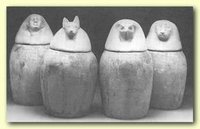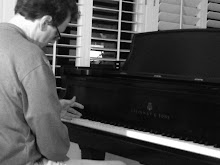Robert Schumann
While working on his Fantasy Op 17, I read a biography by John Daverio, "Robert Schumann: Herald of a New Poetic Age". (Apparently Daverio, like Schumann, also threw himself in a river -- the Charles? -- but, unlike Schumann unfortunately, actually succeeded). I found the biography to be persuasive. I confess that I broke down in tears when I read of Robert’s final days in the asylum, how Clara finally managed to visit him shortly before he passed away, and how apparently he recognized her. No need to recap the book here, but I was struck by the creative, literary dimension of this composer. All his life, it seems, he considered himself as much a poet as a composer. Certainly his lieder bring poetry to a new level, combining text with the color and nuance of tone.
I enjoy the fresh ideas Schumann brings to his music. For example, in his Op 17 Fantasy in C, the first movement "Ruins" (I guess this title didn't survive) starts with a dominant bass line (G) and a broken chord, likely a dominant 11th or a combined dominant + subdominant. You really don't get the tonic (C) in root position until the final few bars of the piece. And it ain't a short piece! As far as form, the developed theme is suggested only in fragments and finally stitched together, again, in the final few bars. When the full theme is finally stated (from Beethoven's An die ferne Geliebte, Op.98), you wonder where you have heard it before as it sounds vaguely familiar. The piece dates from the early 19th century (1838/9).
I wonder whether Robert wrote his Hausmusic to pay the bills. I guess his Album for the Young, written for his children (Robert and Clara had seven), was one of his top sellers. His fantasy was not; apparently even Clara stopped performing it on her tours after only a year or so. I previously believed that his Kinderszenen, like the Album für die Jugend, were also written for children. Certainly they are more straightforward than other keyboard works of his. Yet, according to Daverio, it was not intended for children per se, but rather was Robert's attempt to capture scenes from his own childhood.
I took a cut tonight at recording the first piece of the Kinderszenen Op 15, Schumann: Kinderszenen: Von fremden Ländern und Menschen. It's a straightforward read, but when you climb into the score you realize there are subtle choices. Consider a few examples:
- What is the tempo? Schumann gives 108mm per quarter, but several editors suggest that in the neo-romantic style, 80mm per quarter would be more accurate. I tried both and like both, but prefer the slower tempo. (I had the same question with the 66m per quarter in the third movement of his fantasy. Apparently Clara's edition had 66mm per dotted quarter; I find her tempo too fast. Here, I think the 66mm per quarter is accurate.)
- He ties the G in bar 6 -- the first time he holds the tenor voice. Why? Perhaps this is the first time he doesn't skip the subdominant, and he wants to hear the melodic shift. The tie seems to help maintain the longer phrase.
- Notice the rests in the bass when the A theme is first stated, but then the sustained tones when B theme is stated, suggesting a duet between soprano and bass voices in B but not A.
- It's easy to over-voice this piece. I tried to ease off my voicing on the soprano (melody).
- What to do on the repeat? I use a different dynamic for A -- Baller usually liked that.
- Notice the fermata in the last bar of B, but not at the end of the bar. How do you handle the final notes of this phrase after the fermata? I chose to expand a ritard. but not the same duration as the fermata.
- I don't consider the final note of this bar an up beat to the next phrase.
Anyway, you get the idea -- perhaps there is never just a straightforward read.


